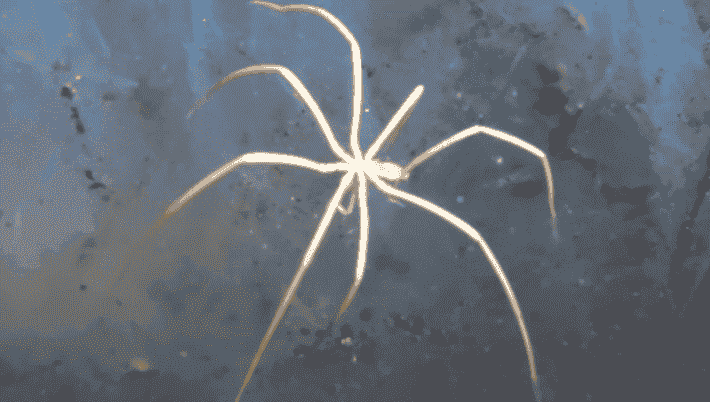
Scientists have successfully documented the mating behavior of gigantic sea spiders, marking a significant achievement in marine biology.
This particular species, belonging to the marine invertebrate group known as Colossendeidae, has been the subject of scientific investigation and examination for over 150 years. Nevertheless, the intricacies surrounding their reproductive cycle have remained shrouded in mystery.
Scientists Dive Deep to Document Unknown Behavior
A momentous advancement occurred during a pioneering voyage in 2022, spearheaded by the Ocean Exploration Trust (OET) on board the Exploration Vessel (E/V) Nautilus. Employing a remotely operated vehicle (ROV), Scientists descended to an exceptional depth of 5,525 feet with the purpose of carefully recording this previously unrecorded behavior.
The primary objective of the expedition centered on the exploration of unexplored deep-sea habitats encompassing the Kingman Reef and Palmyra Atoll, both of which are situated within the Pacific Remote Islands Marine National Monument.
The remarkable findings have recently been comprehensively elucidated in a scholarly publication within the esteemed scientific journal Marine Biodiversity.
Read more: NASA Juno’s Astonishing Discovery: Mysterious Green Lightning Bolt Spotted On Jupiter
Exploring the Intriguing Traits of Sea Spiders

Georg Brenneis, a zoologist from the University of Vienna and the lead author of the study underscored the profound significance of this event, stating, “This momentous occasion marks the first instance in which human observers have directly witnessed this behavior.”
Despite extensive scrutiny of sea spiders through numerous historical field surveys, their reproductive biology has remained elusive, as expounded by Brenneis. “To date, there have been indications suggesting that their reproductive processes may substantially deviate from those observed in their related species.”
Sea spiders, commonly known as pycnogonids, are not true spiders but rather arthropods, sharing affinities with spiders, insects, and crustaceans. These marine creatures inhabit oceans across the globe, ranging from shallow coastal waters to the profound depths of oceanic trenches.
The largest documented species of sea spider is Colossendeis colossea, found in the Southern Ocean surrounding Antarctica. Individuals of this species have been recorded with leg spans surpassing 70 centimeters (27 inches). Such dimensions diverge significantly from the leg spans typically observed in most other sea spider species, which typically measure only a few centimeters.
Sea spiders possess an unconventional anatomical structure in contrast to other arthropods. They feature diminutive bodies and elongated, slender legs, which impart a resemblance to true spiders despite their distant relationship to them.
Read more: Pharmaceutical Industry Fights Back Against Medicare Price Talks

